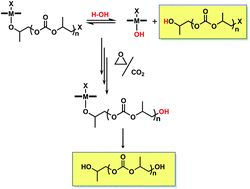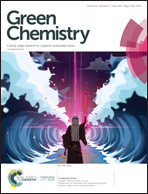Chain transfer agents utilized in epoxide and CO2 copolymerization processes
Abstract
This tutorial deals initially with a comparison of the mechanistic aspects of living and immortal polymerization processes. The living polymerization pathway originated with the anionic polymerization of styrene by Szwarc, whereas immortal polymerization was first described by Inoue for the homopolymerization of epoxides using an aluminum complex. A similar behavior would be anticipated for the copolymerization of epoxides and carbon dioxide catalyzed by well-defined metal complexes. The major difference between these two pathways is rapid and reversible chain transfer reactions involving protic impurities or additives in the latter case, that is, the stoichiometry of the monomer/initiator ratio changes as a function of the nature and concentration of the chain transfer agent (CTA). For instance, in early studies of the copolymerization of epoxides and CO2 where adventitious water was present in the copolymerization reactions, there was little control of the molecular weight of the resulting copolymer product. Presently, the presence of chain transfer with protic CTAs during the copolymerization of epoxides and CO2 is a major positive factor in this process's commercialization. Specifically, this represents an efficient production of polyols for the synthesis of CO2-based polyurethanes. Studies of the use of various CTAs in the synthesis of designer polymeric materials from CO2 and epoxides are summarized herein.



 Please wait while we load your content...
Please wait while we load your content...
